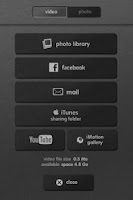I have to say I have really been enjoying reading this book and collaborating with all my bloggy friends on the great things we're learning! Chapter 5 deals with the small group component of Guided Math. Some of my favorite points:
- Small group instruction is a defining component, but is not the ONLY mode of instruction. I love this because I agree with a balanced approach. We need whole group, small group, one on one, partners, group work, and individual work. All of these have value and need a place in our instruction.
- Small group instruction gives the teacher an enormous amount of flexibility in meeting the needs of students and gives maximum impact to teaching. AMEN!
- Children are more likely to open up, take risks, and ask questions in a small group setting. I've seen this first hand!
- Use your manipulatives. I loved this research stated on page 143, "Research shows that 90 percent of what we both say a nd do is retained, compared to only 50 percent of what we hear and see." Wow! We all know that "doing" is important, but did we realize just how important it is for retention?
- Keep your small group area organized and free or clutter--((sigh)) I'll just go ahead and admit that my small group table (right by the door) becomes a dumping ground. I've GOT to stop this! I waste time cleaning it off to use it.
- Let formative assessment (and sometimes summative) to form groups and guide your daily instruction.
Tada! Guided Math Group Records!
(Don't you just love those blocky faces?)
I created this form to serve three purposes:
- Group students
- Take notes during/after the lesson
- Have a paper trail for RTI detailing whom was in the group, when we met, what was covered, and how well said students performed.
Click HERE to see the live form.
Click HERE for the spreadsheet that you can save a copy of.
Another key point in this chapter was that just because a student gets an answer correct doesn't necessarily mean they understand the concept. So true! I plan to address this in math conferences. I don't have all of the logistics worked out in my head yet, but hopefully after we read chapter 7 I'll have a better understanding. I've been doing some research and came across this fabulous blog dedicated guided math: Dr. Nicki's Guided Math Blog. She has some information about conferences and even some forms she created. Definitely worth the look.
Thanks to our wonderful hosts for hosting this book study:
Chapter 1: Primary Inspired
Chapter 2: Third Grade Gridiron
Chapter 3: Making It as a Middle School Teacher
Chapter 4: Once Upon a Teaching Blog and Sweet Seconds
Chapter 5: Toad-ally Exceptional Learners and Pitner's Potpourri

.PNG)


















































